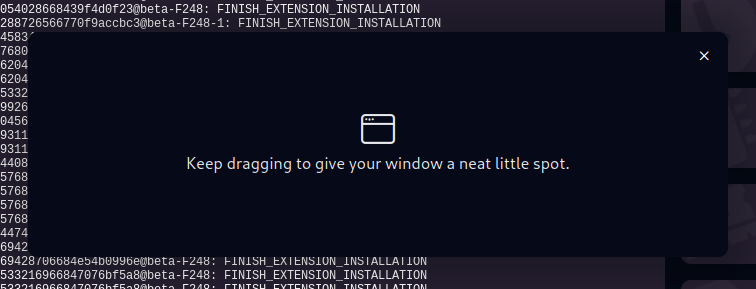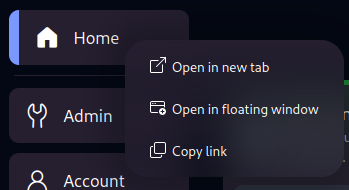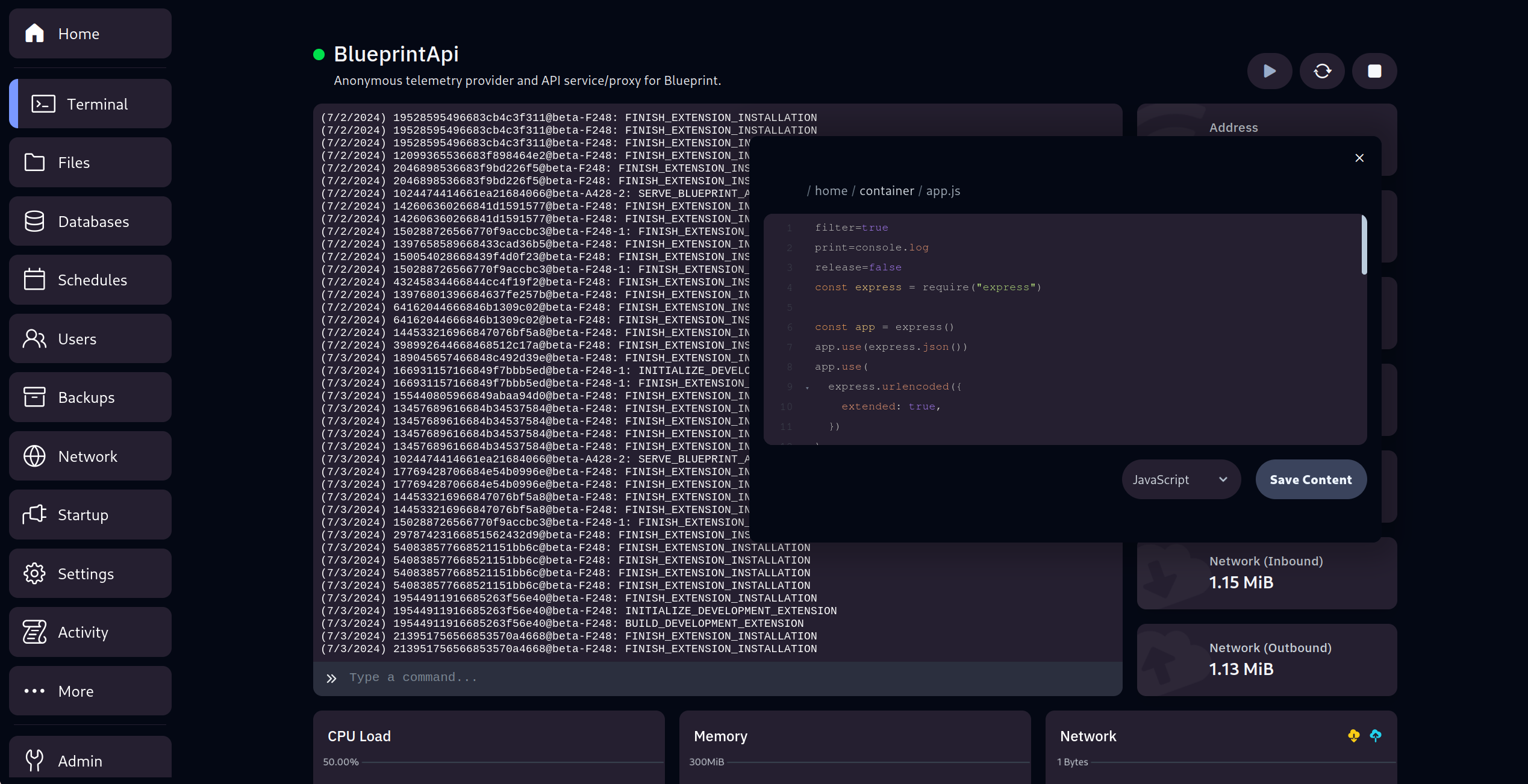Integration of Blueprint with Pterodactyl Panel Using Docker
Hello everyone,
I'm new here and recently discovered Blueprint and I'm looking for guidance on integrating Blueprint into my existing Docker setup where I have the Pterodactyl panel and wings running. Could someone please help me understand how to set up Blueprint to interact with the panel? i have read the docs and i tried to do the very easy install guide (thank you for whomever did that) and i ran into issues while running the install. so i opted for the docker container route, I'm unsure about the steps needed to enable communication between Blueprint and the panel.
Any advice or pointers in the right direction would be greatly appreciated!
Thank you!
26 Replies
Hello 👋
The Docker container is currently a combination of Pterodactyl and Blueprint and should communicate normally out-of-the-box.
https://github.com/BlueprintFramework/docker has all the information I could think of, but if you're integrating it with your existing compose file, you'll only need to do the following:
-
- Change the image to
- Add the following two volumes under your panel service:
- Add the following section at the bottom of your compose file:
-
-
and this is on the docker-compose.yml file for blueprint or pterodactyl?
Pterodactyl
It's the same one
juat making sure
okay
ill try it out
👍
im so incredibly good at docker damn
0_0
thank you loki for maintaining this stuff lol
i can only wrap my head around bash and making funny things with js
You're welcome xD
Anything else you can think of that a lot of people would benefit from, let me know and I'll solve it.
uhh
blueprint.sh c++ rewrite
im joking hehe
Julia rewrite 0_0
oh no
loki did you see how hard i cooked today



Ooh
It's essentially a drag and drop website builder now
lmfaooo
Vodka-induced Malbolge rewrite attempt coming soon to theaters near you!
tiny window

okay this is my panel docker-compose.yml file
version: '3.8'
x-common:
database:
&db-environment
MYSQL_PASSWORD: &db-password "CHANGE_ME"
MYSQL_ROOT_PASSWORD: "CHANGE_ME_TOO"
panel:
&panel-environment
APP_URL: "http://pterodactyl.example.com"
APP_TIMEZONE: "America/Edmonton" # Updated timezone to America/Edmonton
APP_SERVICE_AUTHOR: "noreply@example.com"
TRUSTED_PROXIES: "*"
mail:
&mail-environment
MAIL_FROM: "noreply@example.com"
MAIL_DRIVER: "smtp"
MAIL_HOST: "mail"
MAIL_PORT: "1025"
MAIL_USERNAME: ""
MAIL_PASSWORD: ""
MAIL_ENCRYPTION: "true"
services:
database:
image: mariadb:10.5
restart: always
command: --default-authentication-plugin=mysql_native_password
volumes:
- "/srv/pterodactyl/database:/var/lib/mysql"
environment:
<<: db-environment
MYSQL_DATABASE: "panel"
MYSQL_USER: "pterodactyl"
cache:
image: redis:alpine
restart: always
panel:
image: ghcr.io/blueprintframework/blueprint:v1.11.7 # Changed to Blueprint image
restart: always
ports:
- "8888:80" # Changed to port 8888 for HTTP
- "4444:443" # Changed to port 4444 for HTTPS
links:
- database
- cache
volumes:
- "/srv/pterodactyl/var/:/app/var/"
- "/srv/pterodactyl/nginx/:/etc/nginx/http.d/"
- "/srv/pterodactyl/certs/:/etc/letsencrypt/"
- "/srv/pterodactyl/logs/:/app/storage/logs"
- "/srv/pterodactyl/extensions/:/blueprint_extensions" # Added Blueprint extensions volume
- "app:/app" # Added app volume
environment:
<<: [panel-environment, *mail-environment]
DB_PASSWORD: *db-password
APP_ENV: "production"
APP_ENVIRONMENT_ONLY: "false"
CACHE_DRIVER: "redis"
SESSION_DRIVER: "redis"
part 1
QUEUE_DRIVER: "redis"
REDIS_HOST: "cache"
DB_HOST: "database"
DB_PORT: "3306"
networks:
default:
ipam:
config:
- subnet: 172.20.0.0/16
volumes:
app:
does this look right?
end
take out the part 1 i dont have nitro
Put it in ```yaml
```
to preserve the syntax and indentation
okay not yml?
Looks good on first glance, but the comments do have me worried. AI is prone to hallucinating quite a bit. Did you mean to change the ports?
Same thing
oh sorry miss read that.
yes i did and yes i did use AI its so hard to find help in this hobby
it worked!!
thank guys
😄
And I included a tutorial on setting an alias in the Github I linked earlier for a nice shortcut, as well as instructions on backups and updates.
thanks man. now the dreaded self sign certs uggghhhhhh